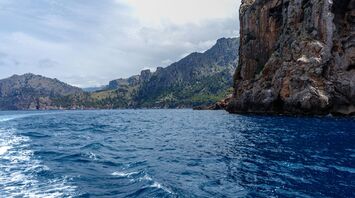Exploring the Serra de Tramuntana: A Hiker’s Paradise in Majorca

The Serra de Tramuntana mountain range, a UNESCO World Heritage Site, stands as the crown jewel of Majorca, offering adventurers a unique blend of breathtaking natural beauty, rich history, and challenging terrain. Located on the northern coast of the island, the range stretches over 90 kilometers, creating a dramatic backdrop of rugged peaks, terraced landscapes, and ancient paths that have captivated hikers from around the world. For travelers seeking both physical challenge and serene encounters with nature, the Serra de Tramuntana is a must-visit destination in the Mediterranean.
The Allure of Serra de Tramuntana’s Trails
The appeal of the Serra de Tramuntana lies in its diverse hiking routes that cater to all levels of experience. Whether you are an avid mountaineer or a casual walker, the trails wind through varied landscapes that reveal the island’s natural and cultural wealth. Ancient olive groves, stone terraces, and remote mountain villages provide a window into the island’s rural heritage, while the stunning views of the Mediterranean coastline keep travelers awe-inspired at every turn.
One of the most iconic routes is the Ruta de Pedra en Sec, also known as the Dry Stone Route. This long-distance trail spans nearly 170 kilometers and follows the traditional dry stone paths used by locals for centuries. As hikers journey through this path, they pass through tranquil valleys, towering cliffs, and charming towns like Valldemossa and Deià, which have long attracted artists and writers seeking inspiration from the region’s striking beauty.
The Dry Stone Route also highlights the architectural ingenuity of the area, with its intricate dry stone terraces that once supported agricultural life in these steep, mountainous terrains. For hikers, these ancient structures are more than just a testament to the island’s history—they serve as an ongoing reminder of the connection between the land and the people who have cultivated it for generations.
Unrivaled Scenic Views
Hiking in the Serra de Tramuntana rewards travelers with some of the most spectacular vistas in the Mediterranean. Towering peaks like Puig Major, the highest point on the island at over 1,400 meters, offer panoramic views that stretch across the island and out to the azure waters of the sea. The combination of sea and mountain views creates an ever-changing landscape, where hikers can enjoy the dramatic contrast between the rugged terrain and the sparkling coastline.
For those who prefer shorter, yet equally rewarding hikes, the trek to the Torre de Verger, a historic watchtower perched on the cliffs, offers unobstructed views of the coastline and the seemingly endless horizon. The tower, which was once used to guard against pirate invasions, now serves as a perfect vantage point for witnessing Majorca’s golden sunsets, casting the Serra de Tramuntana in a warm, magical light.
The variety of natural scenery doesn’t end there. Along many trails, hikers will encounter hidden coves, pristine beaches, and crystal-clear waters that beckon for a refreshing dip after a long day of walking. Cala Tuent and Sa Calobra, two of the island’s most secluded coves, are often considered the hidden gems of the Tramuntana coastline.
A Blend of Nature and Culture
Beyond its natural splendor, the Serra de Tramuntana is a place where culture and nature intertwine. The towns and villages nestled within the range are steeped in history, and many have retained their traditional character despite the influx of tourism. The village of Deià, once home to the famous poet Robert Graves, continues to attract creative minds who find solace in the peaceful ambiance of this mountain retreat.
Valldemossa, with its cobbled streets and historic monastery, offers a glimpse into Majorca’s religious and cultural history. This charming town is famously associated with the composer Frédéric Chopin, who spent time here during the winter of 1838-1839, drawing inspiration from the landscape for some of his most introspective works. Today, visitors to Valldemossa can explore the monastery and wander through the village, taking in its serene atmosphere after a day of hiking.

The cultural richness of the Serra de Tramuntana is also reflected in its agricultural practices, with terraced farming and olive groves that have existed for centuries. Travelers can sample local olive oil, almonds, and other regional delicacies that are produced sustainably in these traditional landscapes. In particular, the village of Sóller, known for its sweet oranges, offers hikers a chance to indulge in freshly squeezed orange juice after exploring the surrounding trails.
Challenges and Rewards
While the Serra de Tramuntana offers peaceful walks through nature, it is also home to some of Majorca’s most challenging hiking routes. For seasoned hikers looking for a thrill, trails like the ascent to Puig de Massanella, the second-highest peak in the range, present a demanding yet immensely rewarding climb. The route takes hikers through dense forests and rocky outcrops before reaching a summit that affords breathtaking views over the island.
Additionally, the famous Torrent de Pareis, a dramatic limestone gorge, offers a more extreme hiking experience. Known for its narrow paths and steep cliffs, the Torrent de Pareis is a favorite among adventurers seeking a rugged and adrenaline-filled hike. This trail should only be attempted by experienced hikers, as it requires a certain level of skill and preparation, but those who tackle it are rewarded with stunning geological formations and an unforgettable connection to Majorca’s wild side.
Sustainable Tourism and Preservation Efforts
As more travelers flock to the Serra de Tramuntana for its unparalleled beauty, there is an increasing focus on sustainable tourism. The region’s UNESCO World Heritage status is a testament to its environmental and cultural significance, and local efforts are underway to ensure that tourism doesn’t compromise the integrity of the landscape.
Hiking routes are well-maintained, and visitors are encouraged to respect the natural environment by staying on designated paths and minimizing their ecological footprint. Many local organizations promote responsible tourism practices, ensuring that the Serra de Tramuntana remains preserved for future generations of hikers and nature lovers to enjoy.



















